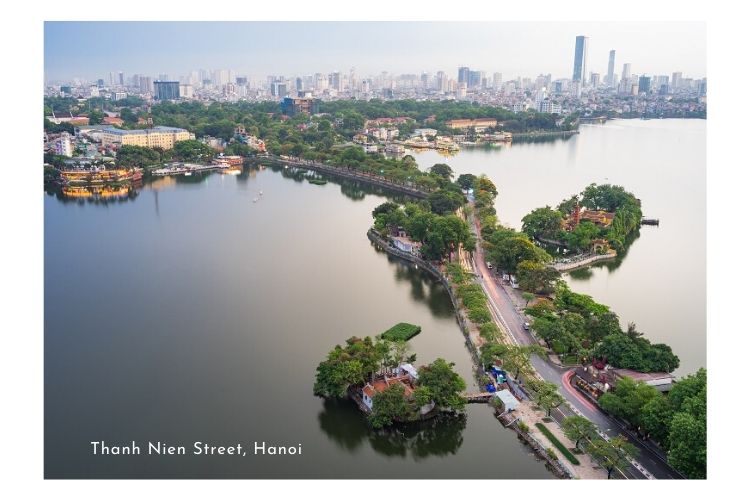Temple of Literature: Inside Vietnam’s first university

A stroll through the Old Quarter, a visit to Ho Chi Minh Mausoleum, a water puppet show or a bowl of Bun Cha – Is that all of Hanoi you have ever known? Explore the Temple of Literature to uncover the secrets of Vietnam’s first national university.
One of the best things to do in Hanoi when you first come to this capital city is visiting the Temple of Literature (Van Mieu Quoc Tu Giam), Vietnam’s first national university. The temple was built in 1070 during the rule of Emperor Ly Thanh Tong to serve as a worship place for Confucius, sages and scholars. Visiting the site, you will marvel at various pavilions, halls, statues and immerse yourself in the academic world of ancient scholars.
Contents
Temple of Literature Historical Imprints
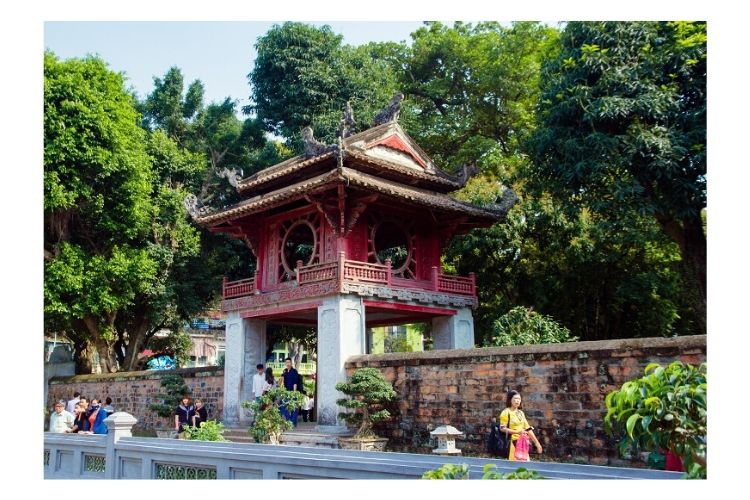
Since its construction in 1070, the temple has witnessed ups and downs of Vietnam history, suffered from war damage and disasters, however, it is well preserved and maintains the Vietnamese traditional architectural style. In 1076, Imperial Academy was established inside the temple by Emperor Ly Nhan Tong, the son of Ly Thanh Tong, to educate Vietnam’s bureaucrats, nobles, royal and other members of the elite. The curriculum was largely influenced by classical Chinese literature and poetry. Then, the Nguyen dynasty founded the Hue capital and established a new imperial academy in 1802. During 1945 – 1954, the French demolished parts of the temple to make additional room for the Saint Paul Hospital due to the full capacity of hospitals during wartime.
» See more on A Hanoi Guide: One Thousand Years of History in a Day
Temple of Literature Highlights
The temple covers a large area over 54,000 square metres, including Van Lake, Giam Garden and the inner space divided into five courtyards with separate walls and gates connected to each other.
• Dai Trung Mon
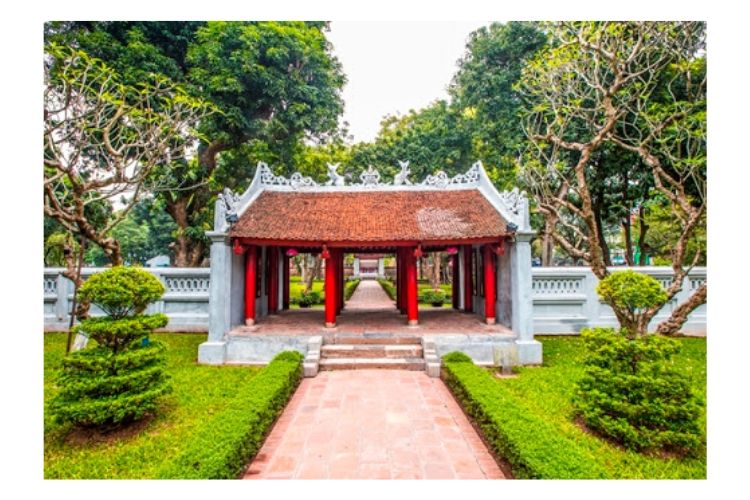
The first courtyard stretches from the main gate to Dai Trung Mon (the Great Middle Gate) with carefully manicured gardens where students take a break under huge tree shadows. You will notice the fish symbol at the top of the gate, which represents the students based on a folk tale, meaning they should study strenuously to pass all the exams and become successful, similar to the fish in the folk tale overcoming challenges and turning into a dragon.
• Khue Van Cac

At the second courtyard, stands out Khue Van Cac (the Pavilion of Constellation), which was built in 1805. Its design is to depict the harmony of Yin and Yang in Vietnamese traditional belief. Inside is a thousand years old bell hanging from the ceiling to be rung on auspicious occasions. Khue Van Cac is also a symbol of Hanoi, the land of thousand years of culture.
• Thien Quang Tinh
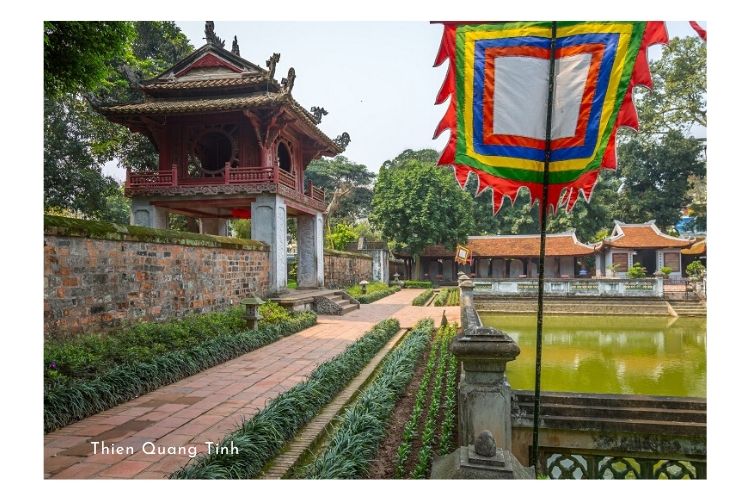
Following Khue Van Cac is the third courtyard, known as the Thien Quang Tinh (Well of Heavenly Clarity). In the past, it is said that the well functioned as a mirror to help students see themselves and dress up before entering the sacred inner part. On either side of the well stand two great halls which house the treasures of the temple, the doctors’ stelaes carved on stone turtles statues. Turtle has an important meaning in Vietnamese culture, symbolizing longevity and wisdom. Currently, there are 82 stelaes of imperial examinations depicting names and birthplaces of 130 graduates from that 82 royal exams.
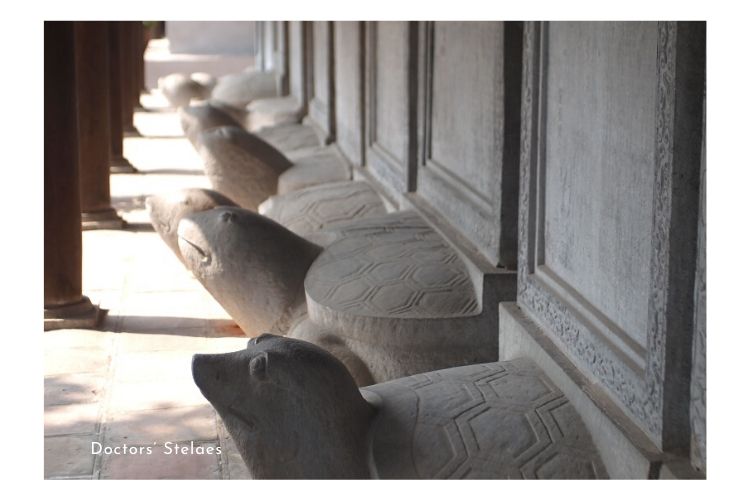
• Dai Thanh Mon
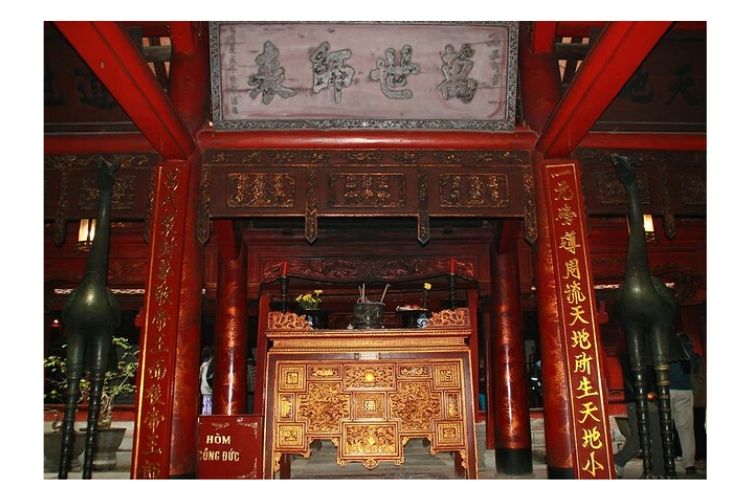
The entrance to the fourth courtyard is called Dai Thanh Mon (the gate to great success), the ceremonial of the complex. You will find altars to Confucius and his most honored 72 disciples and Chu Van An, a Vietnamese respectful teacher who dedicated his life to teaching. There are also altars of other philosophers in this sanctuary. There is a small museum displaying inkwells, pens, books and personal artefacts of students previously studied at the temple.
See more on A Family-Friendly Guide to Ho Chi Minh City
• Thai Hoc House
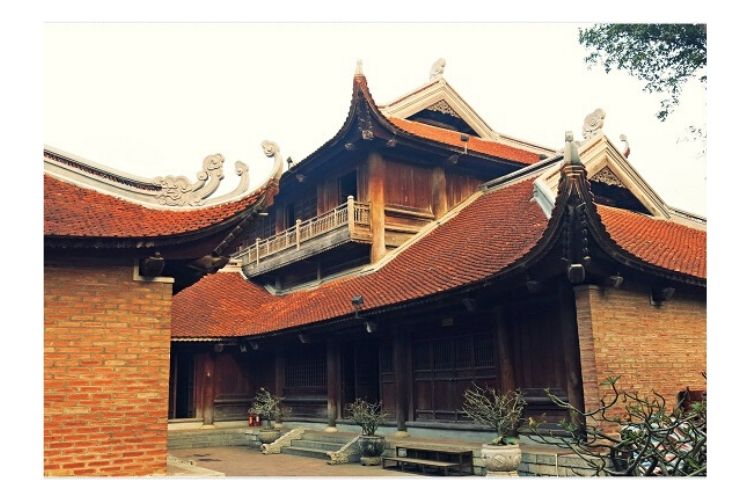 This is the Imperial Academy, added to the construction in 1076 under the command of Emperor Ly Nhan Tong. In the past, it was the academy for the princes and literate mandarins only. The fifth courtyard is made of 2 floors. While the ground floor stands a statue of Chu Van An, the upper floor is dedicated to worship the three kings who founded and developed the place: Ly Thanh Tong, Ly Nhan Tong and Le Thanh Tong.
This is the Imperial Academy, added to the construction in 1076 under the command of Emperor Ly Nhan Tong. In the past, it was the academy for the princes and literate mandarins only. The fifth courtyard is made of 2 floors. While the ground floor stands a statue of Chu Van An, the upper floor is dedicated to worship the three kings who founded and developed the place: Ly Thanh Tong, Ly Nhan Tong and Le Thanh Tong.
How to get there
The Temple of Literature is located on Van Mieu Street, Dong Da District. Its distance from Hoan Kiem Lake and the Mausoleum of Ho Chi Minh is around 2km and 1.2km respectively. Depending on their start point, visitors can choose to go there by bike, taxi, a leisurely cyclo trip or join a Hanoi Full Day Tour to explore Hanoi highlights.
A budget-friendly transportation option for you is public buses. You can catch the buses #02, 23, 32, 38 which stop at the main entrance.
Interesting facts about the Temple of Literature

- Rubbing or touching the head of stone turtle stelea is believed to bring good luck for students who attend upcoming important exams and success to their academic path. However, to protect the relics from being abraded, a fence is placed to prevent people from approaching the stone turtles.
- The image of Khue Van Cac and a corner of Thien Quang Well is printed on one side of the “100,000 VND note”. Now, have a look inside your wallet to have a first look at the site.
- One of the two largest “thundering” drums in Vietnam is located at the Temple of Literature. It bears that name as the sound when hitting up like thunder and resounding.
- As a tradition, Vietnamese like to hang calligraphy of meaningful letters inside their house especially during Tet holiday, which represents their desire for good luck and prosperity. On this occasion, you will see many senior teachers gather here displaying black ink and crimson papers to write calligraphy and give to those who wish to. Certainly, this comes with a price.
- The Temple of Literature is a favorite place for graduation photos. Students in Hanoi usually choose this place as a background for their photo as it is a symbol of education with historic value and a learning spirit.
See more on Iconic Bridges in Danang
Know before you go
• Entrance fee:
# VND 30,000 for Vietnamese and foreign adults.
# VND 15,000 for Vietnamese students holding ID or student card
# Free entrance for children under the age of 15
• Opening hours: All year round except for national events
# From November to March: 8:00 – 17:00
# The rest months: 7:30 – 18:00
• Manner: Since this is a sacred place, visitors should avoid speaking or laughing loudly at this quiet place.
• Best time: It is recommended that visitors should spend at least one hour to explore the structure and get to know about the history and culture behind. Morning tours are better than the ones in the afternoon especially in the summer time as the weather is extremely hot, so you should have your own good timing.
• Dress code: Visitors should dress respectfully, knees and shoulders should be covered at all times when visiting temples and mausoleums in Vietnam. You can use a sarong to cover your shoulders or wrap it around your waist to cover your legs when visiting temples. Read Vietnam Packing List: How to Pack Smarter.
© Maika Tours
Written by Tuyen Vo
You May Also Like:
